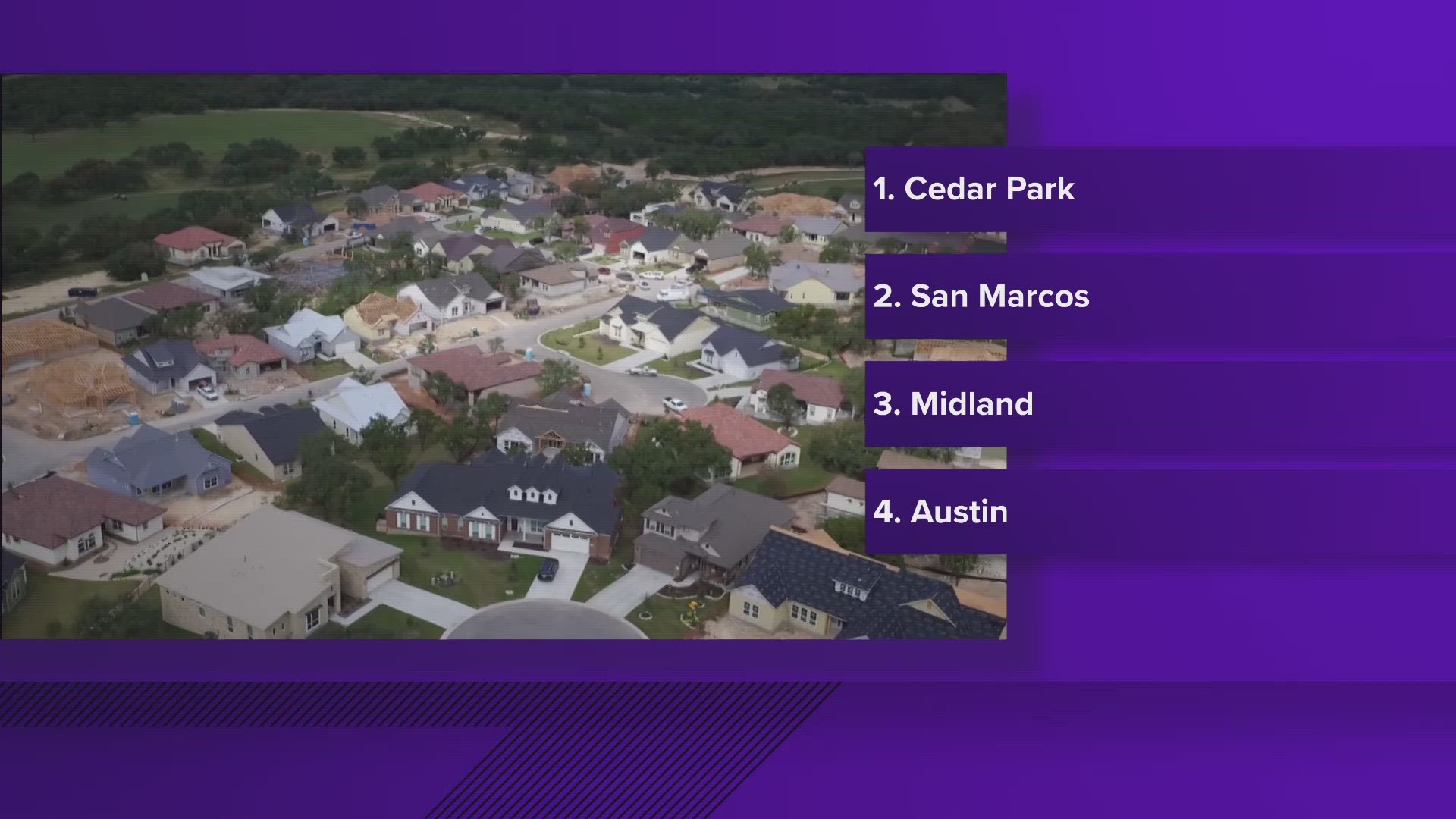AUSTIN, Texas — A new study shows that of the top 10 most affordable places to live in the southern U.S., three are in Central Texas.
The list, which compared median household incomes to cost-of-living data, ranked cities by income-to-expense ratio, with a higher ratio indicating more affordability.
Cedar Park topped the list, with a median household income of $86,530 and a cost-of-living estimate of $61,774, for an estimated income-to-expense ratio of 1.401.
At No. 2 is San Marcos, with a median household income of $86,530, a cost-of-living estimate of $64,652 and an estimated income-to-expense ratio of 1.338.
Austin came in at No. 8 on the list, with a median household income of $86,530, a cost-of-living estimate of $67,597 and an estimated income-to-expense ratio of 1.280.
The only other Texas city to make the list was Midland, which came in at No 3. Other cities in the top 10 include Raleigh, North Carolina; Ardmore, Oklahoma; Douglasville-Douglas County, Georgia; Louisville, Kentucky; Huntsville, Alabama and Alexandria, Virginia.
The Ascent, which conducted the study, said Cedar Park has a median income 22.2% higher than the U.S. median income with a cost of living that beats the national average by 7.7%. Groceries cost 15% less than the national average in Cedar Park, The Ascent said.
Cedar Park’s largest industries are professional, scientific and technical services; retail trade; and health care and social assistance.
Meanwhile, San Marcos has a similar median income, and groceries there are 14.2% less than the national average.
The industries that employ the most people in San Marcos are accommodation and food services; retail trade; and educational services.
Austin was the largest city to make the list, but, according to The Ascent, the cost of living in Austin is only 1% more than the national average. The study took note of Austin’s high housing prices, which came in at 15.5% more than average. But Austin’s grocery costs are 11.6% less than the national average, and transportation costs in Austin are 9.1% less.
The largest industries in Austin are professional, scientific and technical services; educational services; and health care and social assistance.
Boomtown is KVUE's series covering the explosive growth in Central Texas. For more Boomtown stories, head to KVUE.com/Boomtown.

